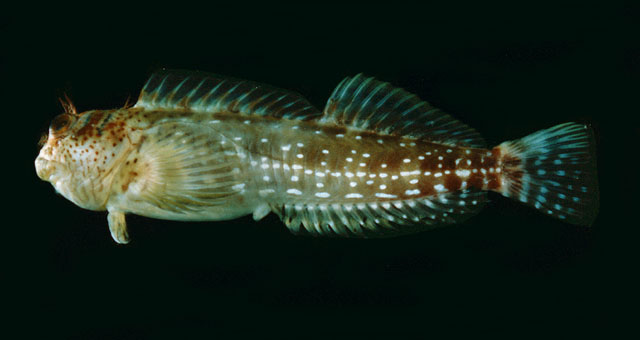| Blenniidae (Combtooth blennies), subfamily: Salariinae |
| 5 cm SL (male/unsexed) |
|
demersal; marine |
| Eastern Central Pacific: Marquesas Islands. |
|
Dorsal spines (total): 13-13; Dorsal soft rays (total): 13-15; Anal spines: 2-2; Anal soft rays: 16-17. Single cirrus on each side of nape; 3-6 cirri on supraorbital tentacle; upper lip margin smooth medially, lateral 1/3 crenulate; body coloration light gray-brown, 6 short paired bars along sides of body, numerous, generally longitudinal, rows of white spots and dashes; head pale brown bearing 2 oblique black striations behind eye and brown band between, dorsally with numerous dark brown dots, and dark brown lines on ventral area. Dorsal spines XIII, 13-15 (rarely 13); anal rays usually 16; lateral line terminating below second and fourth dorsal soft rays; gill rakers 16-17 (Ref. 54980). |
| Oviparous. Eggs are demersal and adhesive (Ref. 205), and are attached to the substrate via a filamentous, adhesive pad or pedestal (Ref. 94114). Larvae are planktonic, often found in shallow, coastal waters (Ref. 94114). |
|
Least Concern (LC); Date assessed: 25 March 2009 Ref. (130435)
|
| harmless |
Source and more info: www.fishbase.org. For personal, classroom, and other internal use only. Not for publication.

